Tissue and Dressing Forceps
Forceps: Forceps consist of two tines held together at one end with
a spring device that holds the tines open. Forceps can be either tissue
or dressing forceps.
Dressing forceps have smooth or smoothly serrated tips.
Tissue forceps have teeth to grip tissue. Many forceps bear the name
of the originator of the design, such as Adson tissue forceps.
Rat Tooth: A Tissue Forceps
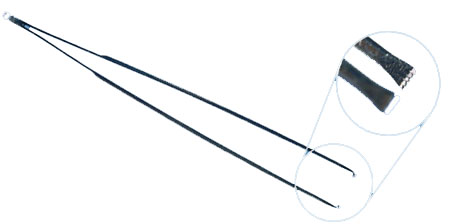 |
- Interdigitating teeth hold tissue without slipping.
- Used to hold skin/dense tissue.
|
Adson Tissue Forceps
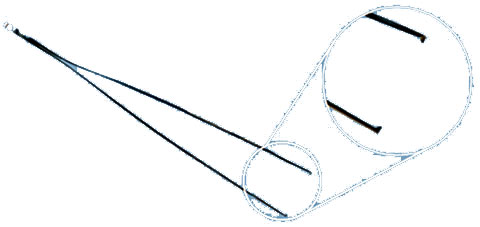 |
- Small serrated teeth on edge of tips.
- The Adsons tissue forceps has delicate serrated tips designed for
light, careful handling of tissue.
|
Intestinal Tissue Forceps: Hinged (locking) forceps used for
grasping and holding tissue.
Allis: An Intestinal Tissue Forceps
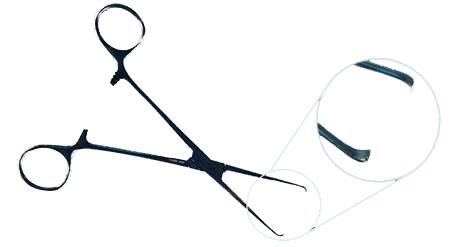 |
- Interdigitating short teeth to grasp and hold bowel or tissue.
- Slightly traumatic, use to hold intestine, fascia and skin.
|
Babcock: An Intestinal Tissue Forceps
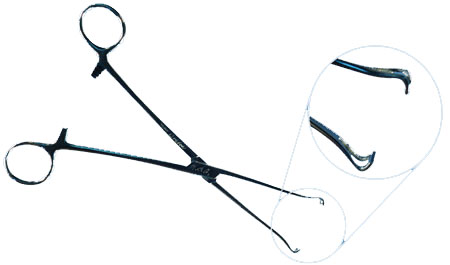 |
- More delicate that Allis, less directly traumatic.
- Broad, flared ends with smooth tips.
- Used to atraumatically hold viscera (bowel and bladder).
|
Sponge Forceps
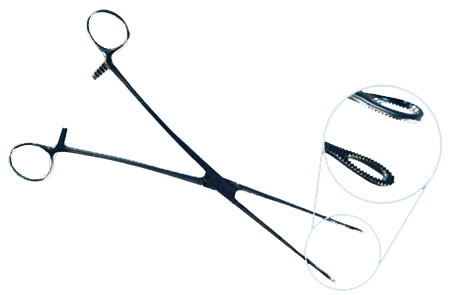 |
- Sponge forceps can be straight or curved.
- Sponge forceps can have smooth or serrated jaws.
- Used to atraumatically hold viscera (bowel and bladder).
|
Intestinal Forceps
Doyen Intestinal Forceps
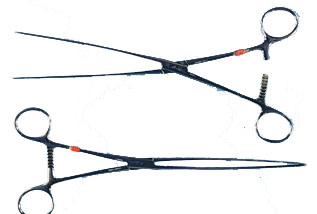
|
- Doyen intestinal forcels are non-crushing intestinal
occluding forceps with longitudinal serations.
- Used to temporarily occlude lumen of bowel.
|
Payr Pylorus Clamps
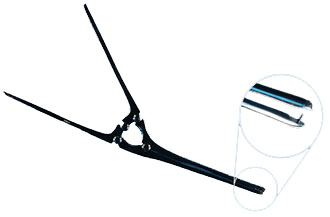
|
- Payr pylorus clamp is a crushing intestinal instrument.
- Used to occlude the end of bowel to be resected.
|
BACK







